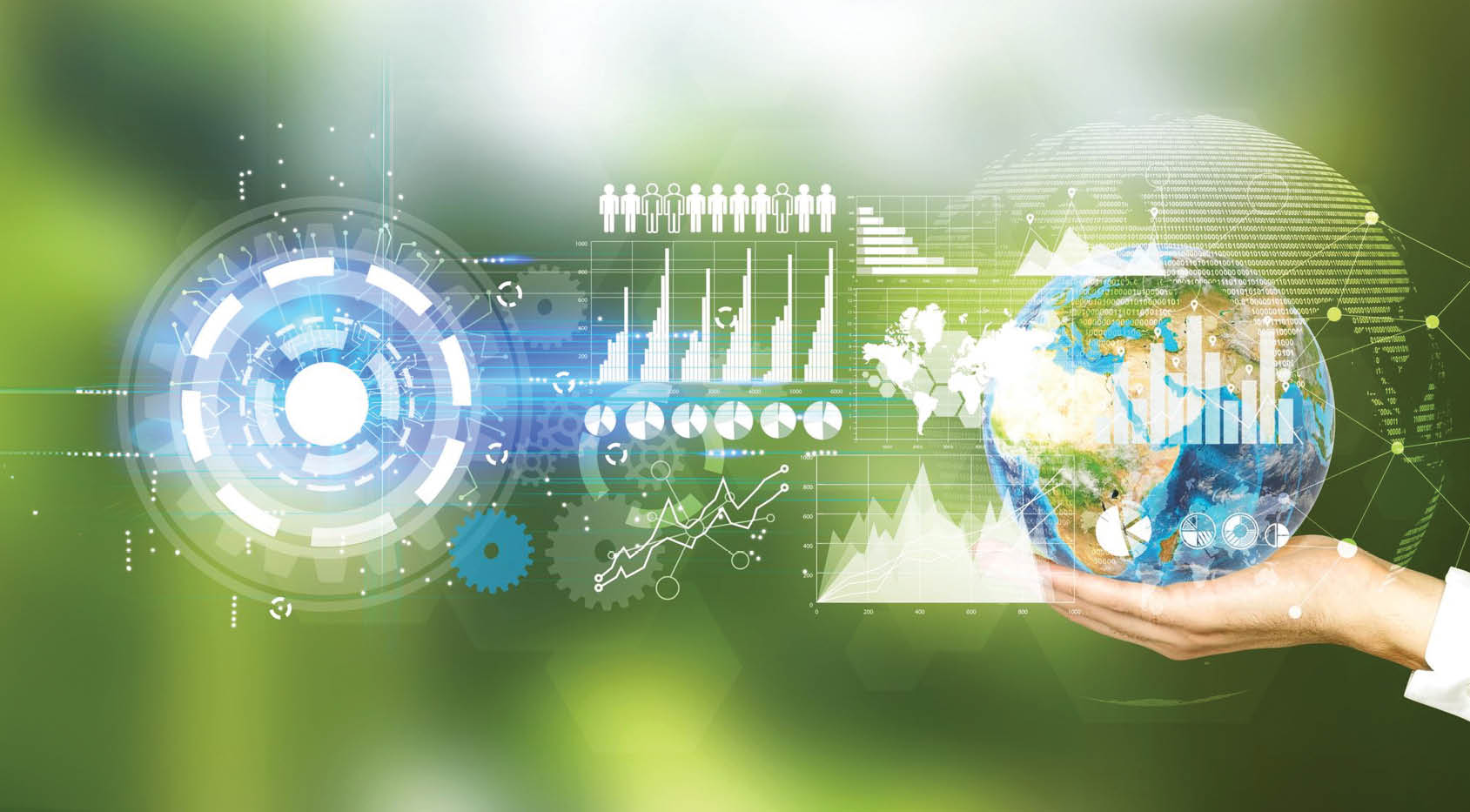A vast repository of actionable data is integral to advance sustainability goals and make the world a better place to live.
To achieve a more sustainable world, robust economic prosperity, and shock resilience, many ‘enabling’ factors need to be at play. These include strengthening productive capacities, ensuring social justice and equity, transparent financial markets and investment, stronger governance and institutional settings, and efficient resource consumption and management.
However, countries are now also becoming more aware of and dependent on other ‘cross-cutting’ enabling factors in the digital transformation domain – in science, technology, space research, and other analytical capacities.
These include digital infrastructure; robotics and automation; innovation and knowledge capital; and the benefits and value of data, sensors, networks, and location intelligence to guide and support evidence-based policy and decision-making.
This is where we see the role of geospatial data, information, and enabling technologies making a significant impact in the future.
Governments, at least to some degree, now understand the need for reliable data, information, and knowledge to support their decisions and to ensure a level of transparency and accountability.
Boosting Development
Moving forward, countries and sectors will have a growing need for geospatial information to support national development, policy, and decision-making, and to achieve socio-economic prosperity. Information systems that are comprehensive, coordinated, integrated, and underpinned by geospatial information technologies and applications, provide the evidence on ‘where’ people interact with their place, cities and environment, and to deliver timely and reliable information necessary for citizens, organizations and governments to build accountable actions, decisions and impact.
Managing Complexity
Geospatial technologies and the geopolitical landscape are often perceived as being co-dependent, especially given the long history of map-making in a military context. Both are anchored to location, knowing what is happening where and when, and understanding geographic positions on Earth.
However, with increasing globalization, our world is becoming increasingly complex, and perhaps less resilient. One of the major learnings from the COVID-19 pandemic was that it demonstrated how entrenched our interconnected world, and commensurate vulnerability, had become – especially with global supply chains.
The pandemic had no respect for political borders, development divides, or physical limitations. No country was left untouched, although the developed world suffered much more than the developing world, and all governments and sectors of society were significantly impacted, creating ripple effects, shocks, and prolonged distress to the global economy.
But at the same time, reinforced the unprecedented need for timely data, geospatial information, enabling technologies, and insights for governments and citizens across the globe, to not only enable decision-makers to inform policies and planning, but to also minimize the risk to people, especially the most vulnerable population groups.
The pandemic also provided a catalyst for bridging divides and forging collaborative digital transformation and innovation in multiple areas of society. Every country had to learn to adapt, and every country used technology to do so – including geospatial technologies.
Today, we are much more technologically mobile and adaptive than in the past. That bodes well for the future.
Knowledge Infrastructure
The geospatial knowledge infrastructure (GKI) concepts, a bit like the UN-IGIF, challenge us to move beyond ‘geospatial data as a product’ to ‘geospatial knowledge as an outcome’ within the broader digital ecosystem.
For communicating to external stakeholders, this messaging is important, as geospatial data ecosystem is only a part, albeit a very important one, of the wider digital data ecosystem. In this regard, as we think more about building resilient and sustainable economies we need to recognize and adapt to how digital technologies and innovation are evolving and are able to assist governments, industry, and the broader community to better understand the role of geospatial information within the ‘knowledge economy’.
This helps us to then focus more on the provision of solutions – being able to solve problems, rather than on the provision of data – and you solve the problem. This means data, applications, analytics, and existing knowledge are embedded in the process and creating value.
Making a Difference
The SDG Data Alliance is establishing a very special role as a means to provide and accelerate SDG implementation reality in developing countries – including some of the world’s least developed countries. Using the power of purpose driven collaboration, global geospatial frameworks, innovation, and enabling GIS technology from Esri, the SDG Data Alliance is presently supporting 20 countries in Central and South America, the Caribbean, Pacific Islands, and Africa.
With the mantra ‘country-led, and country-owned, the Data Alliance’s unique approach allows countries to not only track progress towards achieving the SDGs but to develop the necessary national capabilities and capacities to make data-driven decisions based on their unique national circumstances. We provide methods, frameworks, and technology, and they make them their own. We provide guidance and they do. They learn
and gain knowledge and we learn and gain knowledge. They grow and we grow. Most importantly as a partnership – there is a high level of trust, commitment and collaboration established on both sides.
Expansion
Now, building on this momentum, the SDG Data Alliance is focused on growing its reach and impact and is turning its sights toward Small Island Developing States (SIDS) as they prepare for the United Nations’ 4th Conference of Small Island Developing States (SIDS4), hosted by Antigua & Barbuda May 27-30. SIDS4 is a unique once-in-a-decade gathering that will bring together Heads of State from 39 island countries to shape a ten-year economic framework for sustainable development.
Island nations are impacted the most by climate change, though they have contributed the least. On the frontlines of the climate crisis, they have become one of the most influential blocs during climate negotiations. During the 78th United Nations General Assembly in September 2023, PVBLIC signed an agreement with the Alliance of Small Island States (AOSIS) and Antigua and Barbuda, with the support of the UN Office of Project Services (UNOPS), to collaborate on the expansion of the SDG Data Alliance to the 39 island nations.
In November, PVBLIC signed a Partnership Framework Agreement with the Prime Minister of Antigua & Barbuda, Gaston Browne, outlining the creation of a Center of Excellence and Global Data Hub for Small Island Developing States (SIDS), which will be focused on propelling small island developing states into a future marked by resilient prosperity, and sustainable development.
The SDG Data Alliance, with partners Antigua and Barbuda and UNOPS, plans to begin implementation in 2024 with the creation of a SIDS Global Data Hub, with the objective to establish a sustainable and enduring repository for comprehensive socio-economic and environmental data on SIDS.
Additional plans and exciting announcements will be made during SIDS4 in late May. We hope to see the geospatial community there in full force in support of the sustainable development of island nations.









